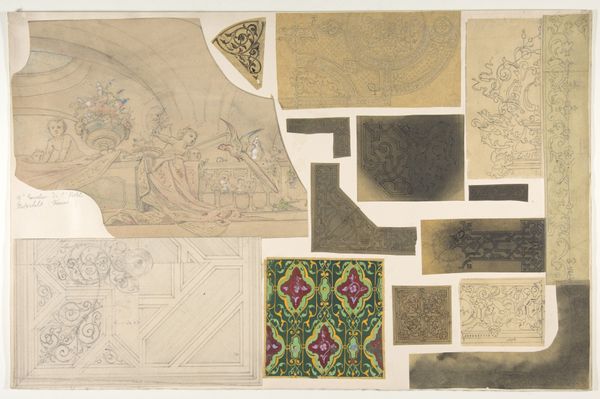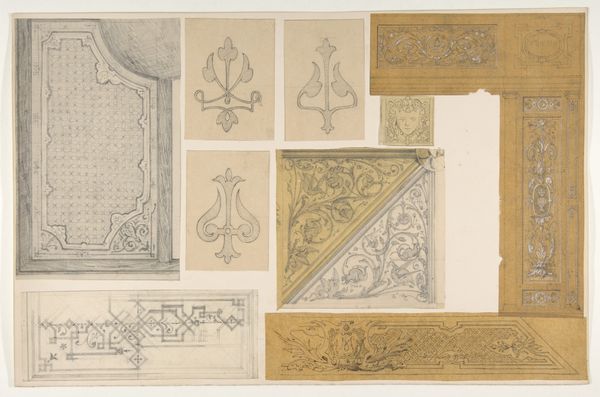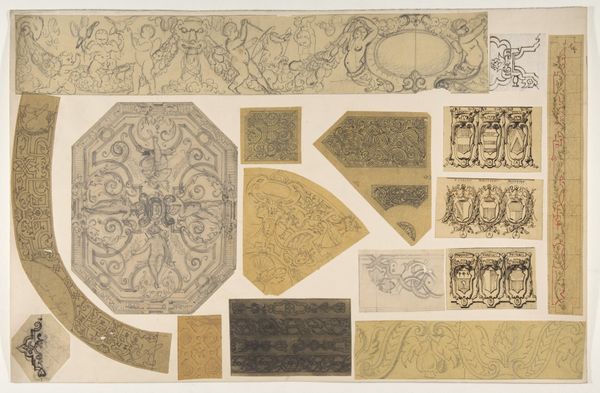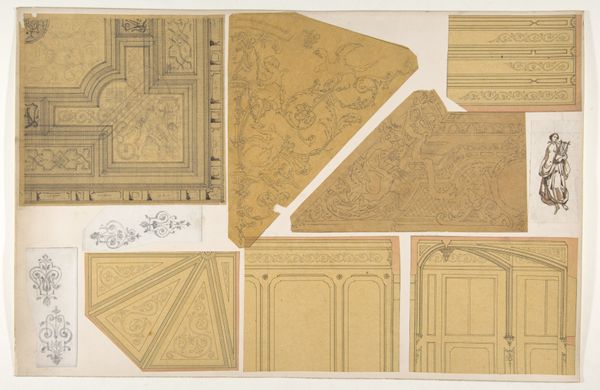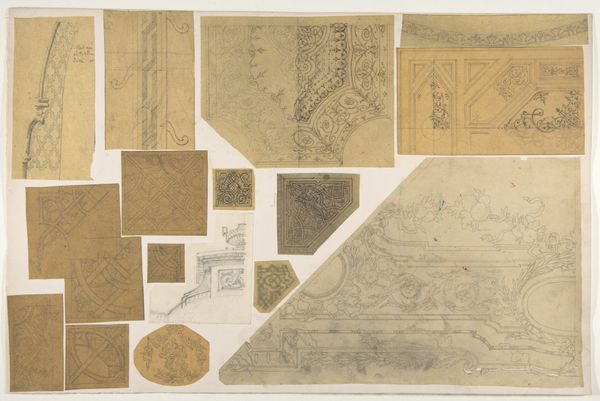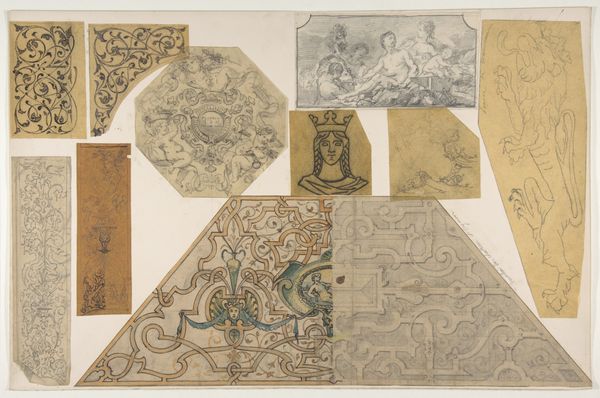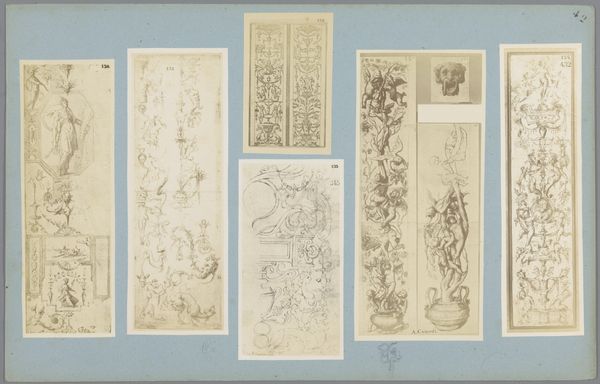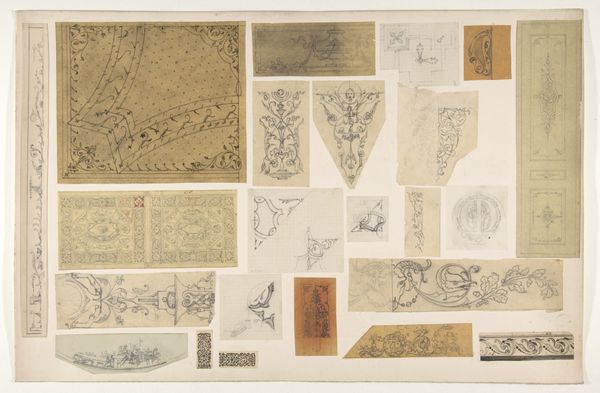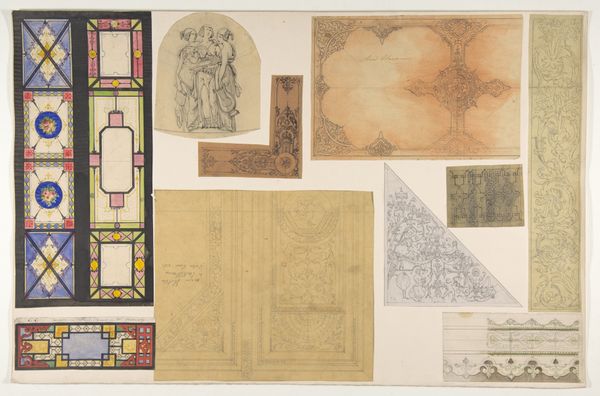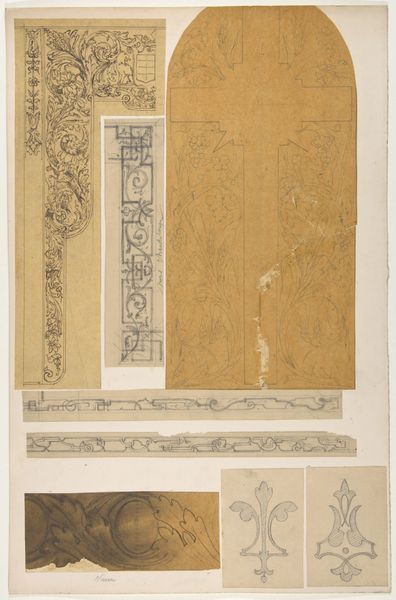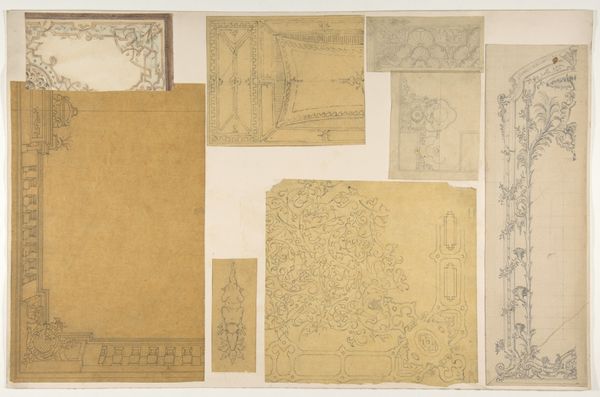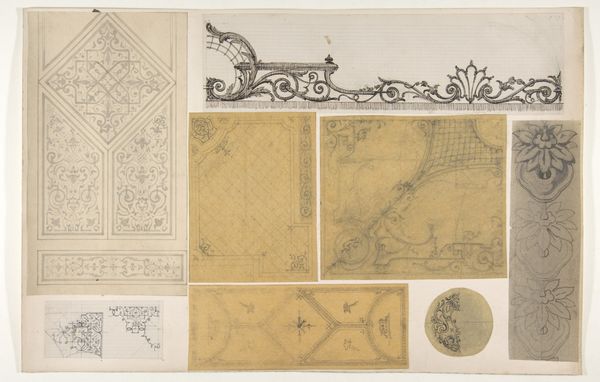
Thirteen designs for the painted decoration of interiors 1830 - 1897
Dimensions: Overall: 12 5/16 x 18 3/4 in. (31.2 x 47.7 cm)
Copyright: Public Domain
Editor: This is "Thirteen Designs for the Painted Decoration of Interiors" from somewhere between 1830 and 1897, by Jules-Edmond-Charles Lachaise. It looks like it’s primarily done in ink, etching, and print on paper, currently housed at The Met. It reminds me of architectural blueprints with an artistic twist. What compositional elements stand out to you? Curator: The linearity is undeniable. Lachaise's commitment to line dictates the visual plane, constructing depth and dimension solely through its variation. Note how the density of line defines form, especially in the rendering of those classical motifs. Observe how they do or do not relate with each other. Does the visual complexity draw attention or detract from the functionality? Editor: It's interesting how you focus on the lines. The density does create dimension, like in the cornices versus the flatter borders. What about the geometry itself? Curator: Precisely. The geometric arrangements present a structural logic. Do these patterns reveal the essence of order within decoration, or simply a method to organize visual data? What about the orientation to either romanticism or neoclassicism? How does this contrast or contradict our idea of this image? Editor: I see your point about the patterns imposing order and visual logic. It is organized data, like a historical record too. I guess I didn't realize how the geometry and linearity worked together so powerfully. Curator: Consider then how this piece might question conventional artistic autonomy. Rather than representing a singular vision, could the collective imagery imply a more distributed form of authorship, reflecting the collaborative nature inherent in the design process? Editor: That's a perspective I hadn't considered. Thanks for pointing out the interplay of form and structure; it definitely enhances my understanding and changes how I initially read the drawing! Curator: And now it may shape your ability to decode all artworks. The formal elements of art, when methodically examined, reveal their essence.
Comments
No comments
Be the first to comment and join the conversation on the ultimate creative platform.
